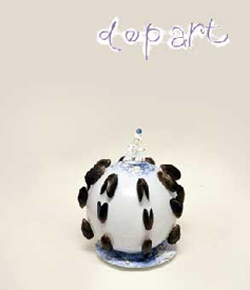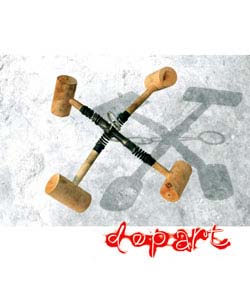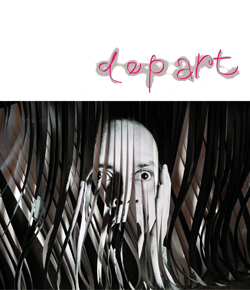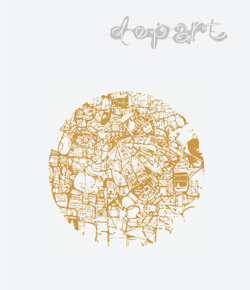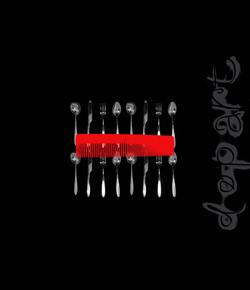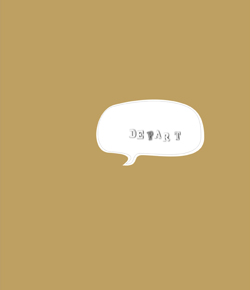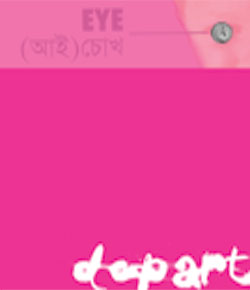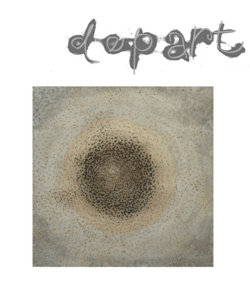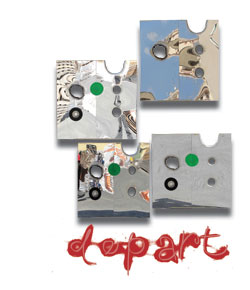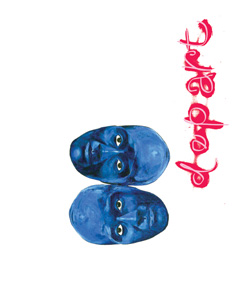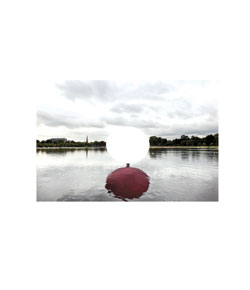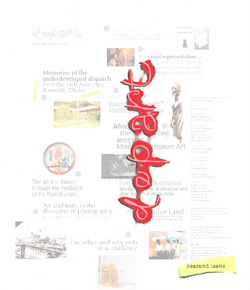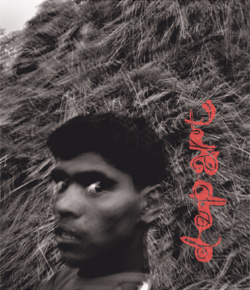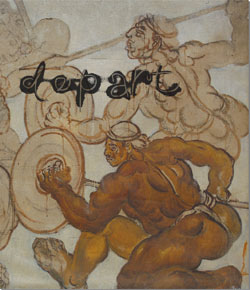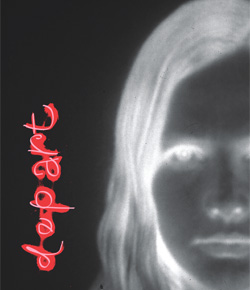Features
Focusing on Location Specific Realities : Writing art history from below
Shawon Akhond removes layers of dominant narratives to chart the terrain of history of the Dhaka art scene

Till now, the written history of Bangladeshi art has been quite simple – linear and primarily institutionalized. Following the partition of 1947, several Muslim artists including Zainul Abedin who had been schooled in the Calcutta Government Art School returned to East Bengal, the east wing of newly independent Pakistan, to start afresh their artistic career. It is with their initiative that the Government took measures to support the artists' community of the capital city of East Bengal or East Pakistan in Dhaka and subsequently set up a national art institute in 1948. This is considered to be the inception of the journey of modern art in Bangladesh.
During the 1950s and 60s, the students left to pursue their higher studies overseas (primarily in various European countries, United States and Japan). Upon returning from their foreign travels, they plotted the journey of modern Bangladeshi art on a new course. It is this pattern of events: the return from foreign travel, followed by the tendency to speak a new language that continued to be in existence even after Bangladesh gained independence in 1971 that left a formative influence on the Bangladeshi art scene. That this propensity does not continue to manifest itself in the present day that is not the case. This is exactly what has been reflected in a number of books and essays on Bangladeshi art that have been published so far. Some have raised their pens against or in favour of abstract art, some have been supporters of social realism in its various modes of expressions, and still others have displayed a liking for a particular style of representation. But one thing they are all in general agreement on is that the history of modern Bangladeshi art began in Dhaka in the year 1948.

Needless to say, this history is Dhaka-centric and dictated by the perceived notion that the history of modern art took off from the institution that Kolkata educated artists help put into shape. After its inception, several art institutes were established in Chittagong, Rajshahi, etc, but they rarely feature in any discussions. However, there is no doubt that the establishment of all the other modern institutions was an expansion of the movement in Dhaka. In other words, the role of Dhaka as the hub of Bangladeshi modern art has always been taken for granted, and this culture of hegemony continues to this day.
However, the recent discovery that, much before the establishment of the art institute in Dhaka, an art school was set up in 1904, in Khulna, under the leadership of artist Shashibhushan Pal (1878-1946) provides the ground for a counter-history to be written. This school was known as the Maheshwar School of Art and has rather a glorious past. However, this history proceeded to lose its lustre and significance following the partition. It was completely revamped in the 1980s and took on a new name and identity Khulna Art College. The curriculum that is taught here and the teaching methodology that is implemented are a replica of that adopted by Dhaka's Art Institute. In other words, Dhaka's position of authority as an art hub remains unchanged.

In lieu of all this, we may pose a question: is the history of Bangladeshi art indistinguishable from Dhaka's institutional art history? We may also bring the issue of the representation of non-institutionalized art forms into the national map of Bangladeshi art. If any other region or district were closely examined, does nothing unusual immediately attract our attention in a bird's eye-view of the entire country from Dhaka? Is the local, regional art history then the key? Why is this needed in the first place? This piece seeks to focus on these questions in a discussion related to both the Bangladeshi and global art scene.
Local art history: finding the actual traces
There still seems to be very little initiative to engage in any discussions on local art history. What is interesting is that the people in the Western hemisphere assumed their local art was indistinct from world art. Any art originating beyond their own boundaries was never included within the purview of world art; in fact, they stubbornly refused to do so. It was not until the 1920s that art history was discussed from a comparatively more global, expanded perspective. With the passage of time, art originating from outside the West is now gradually beginning to be included as a player in world art history.

Even then, history of any sort is essentially an expression after being filtered and distilled through the passage of knowledge. Alongside knowledge are the dual roles of politics and prevailing power structure. Behind the scenes of the presentation and construction of any history is the instrumental role played by power and politics. In other words, the powers-that-be presents information by tailoring it to fit their own vested interests and requirements and interpret history strictly in a way that suits them.
There is quite a lot of controversy associated with the fine art's own local history. Moreover, there is a scope and tendency to create an atmosphere of confusion. Any valid discourse on the subject has been thwarted and in fact, negatively impacted by colonialism, capitalism, universalism and Western intellectual imperialism. Needless to say, the problem lies not with the local history itself, it is with the knowledge and points of view of the ones who write/will write this history in the first place. Just as other facets of history are constrained and limited by the writer's personal points of view (or by some other factors) to be given a positive slant, the same is applicable in the matter of local art history as well. For instance from a geographical standpoint, there have been numerous writings at various points in time on Chinese art, African art, Indian art or European art. From an anthropological perspective, the same is true for Red Indian art (which is essentially Native American), Inca art, Maya art and Santal (indigenous Indian art). Alongside this, there also exists much written discourse on South-Asian art, East European art and art both from the Far and Middle East. Moreover categories of this nature are quite inextricably interwoven in the history of art. There is no reason to assume that art writers/historians always provide a judicious and valid argument while interpreting this history. For whatever reason, intellectual framework, art-centric viewpoints, political factors and/or leanings or a paucity of information these writers were often not sympathetic about local/regional art and often inaccurately misrepresented it in their written discourse. This will be easier to understand if the point is illustrated with a few examples. For instance in his book entitled Handbook of Sculpture published in 1864, Professor Richard Westmacott summarily dismisses Indian art altogether in one paragraph. In his words, 'There is no temptation to dwell at length on the sculpture of Hindustan. It affords no assistance in tracing the history of art, and its debased quality deprives it of all interest as a phase of Fine Art, the point of view from which it would have to be considered.'

most celebrated rickshaw painters of Dhaka.
Again, in the 1899 published title A History of Indian and Eastern Architecture, J Fergusson and J Burgess completely rejected Indian art with this statement: 'As works of art they are most barbarians, it may be said the most vulgar, to be found in India…'
In reality, prior to 1919, Western historians did not impart any importance to any art that originated beyond their own borders. For instance in a joint article published in The Times on 28th February 1910, a number of Western artists, art critics and students expressed their views on the importance of Indian art. In their words, 'We the undersigned artists, critics, and students of art…find the best art of India a lofty and adequate expression of the religious emotion of the people and of their deepest thoughts on the subject of the divine. We recognized in the Buddha type of sacred figure one of the great artistic inspirations of the world.'

So we can see a change in perspective. It cannot do to forget that it is via the medium of local art history that we can know in thorough and minute detail the art of a specific region. Any world-renowned (or obscure) artist is, on some level, essentially a 'regional artist'.
For instance, referring to the Indian sub-continental context, artists from the Pal dynasty for instance, Dhiman and Beet-pal – two artists from the era of the East India Company Jainuddin or Sheikh Mohammad Amir were all prolific during their own time. However, there is very little that we know about them. The information we do have is rather fluid and has been taken from foreign sources. It would not be too far-fetched from the truth to state that insufficient discourse on sub-continental art history is solely responsible for this fact.

One of the primary points of significance of local art history is that it provides an ideal opportunity to place an entire region and its art under a microscope, thereby bringing to light all its relevant facets, details and information. The art history of any country in any corner of the world is essentially 'local history' in the context of that particular country. The moot question here is this: from exactly what perspective is the discourse on local art being carried out? If we free the discourse from the many confines of a centralized power structure and its own vested intellectual framework instead, choosing to look at it from a more multi-layered perspective within the framework of a local knowledge and power structure, I feel it would be much easier to circumvent the various barriers entailed in a discourse of this nature.
Current Art History of Bangladesh vs Dhaka's Regional Art History
In terms of geographical size, Bangladesh is not a very large country. Even then, a construction of the country's 'local' art history is vitally important. By 'local', we mean the history of the small towns and tiny districts of the country. It has already been mentioned that the written art history of the country has so far been represented as Dhaka-centric, institutionalized and linear. I feel that these are all aspects that severely limit the potential of art history in this country. This is perfectly illustrated by the fact that we did not have much of an idea even about Dhaka's art history prior to the Partition of 1947. The birth of various art forms where new civilization has sprung up is perfectly normal. Still, our knowledge on Dhaka's art scene is severely limited. A few examples will clarify this further.

It is a commonly held belief that Dhaka did not have an art culture prior to the establishment of the art institute in 1948 under the leadership of Zainul Abedin. The pre-Partition art culture predominantly consisted of traditional, rural craftsmanship. Exactly how misleading this perception is may be illustrated through a few simple facts.
The first example is of an art exhibition, held in Dhaka, occurred much before 1948, which passes as the year of the first exhibition according to official history. Following Hitler's invasion of the Soviet Union in June 1941, the Progressive Writers Forum in Dhaka took the initiative to constitute the 'Soviet Well-Wishers' Group. The Group organized a week-long exhibition in mid-February 1942 at Regents Park Hall in Dhaka (later known as Baptist Mission Hall, this was subsequently demolished), located near Dhaka's Sadar Ghaat. According to the memoirs of the Group's leader Kiranshankar Sengupta, this exhibition, inaugurated by Dr Mohammad Shahidullah, featured nearly a hundred large paintings depicting Soviet life. The event proved to be a resounding success in Dhaka and later travelled to other locations outside Dhaka as well. However, very little is known about this exhibition. Far from there being any information on this event in the writings on Bangladeshi art history, it is not even mentioned in the first place. However, if we consider this exhibition to be a landmark event, we will have to accept that there were artists prior to the establishment of the art institute in Dhaka. This topic merits further detailed research and investigation which has never been done till today.
Even if we do not know about the artists that took part in this exhibition, we do know the name of an artist who was active in Dhaka prior to Partition during the 1930s and 1940s. He is Pitolram Sur (1902-1987) of Shakharibazar. Pitolsur used to draw pictures of feature film actors and actresses on the wall facing the cinema theatre. These were essentially the prototypes of the cinema banners and publicity posters. Pitolsur had no formal artistic training; he was a self-taught artist. His family trade was in conch shell craftsmanship. However, it is said that he was particularly skilled in portraits. 'Art House' (?) his institute was located near the Maya (Star) theatre in Dhaka's Wiseghat area. In addition to creating portraits, he was also involved in painting signage, scenic backdrops for photography studios and natural scenery. It is rumoured about Pitolsur that he only had to set his eyes on someone once and he would be able to create an absolutely identical portrait. He was also said to be especially gifted in Bidyasagar calligraphy.
Pitolram Sur played a pivotal role in Dhaka's local art scene and further scope exists to do further research on his life and times.
There was also an artist by the name of Chitraniva Chowdhury who was active in Dhaka during the 1930s. Till the 1980s (others say it was till the beginning of the 1990s), a mural created by her once assumed place of pride at a residence in Purana Paltan (12, Topkhana). What is astonishing is that we do not know anything about this mural. Recent research has indicated that following a change in the ownership of the house, the mural was destroyed. Despite several attempts, I was unable to trace even a single photograph of this mural. But this mural certainly is a significant chapter in the history of Dhaka's and therefore Bangladesh's art.
Even after partition, the extent of our knowledge on Dhaka's local art history remains quite limited. We all know about the work of various established artists who arrived in Dhaka from Calcutta (now Kolkata) after the partition. But we know very little about those non-institutional artists who, as a result of the partition, were driven from various regions of India to East Bengal or Bangladesh. A significant number of these were non-Bengali Muslims. This matter will be made clearer if we present some important statistics. According to the census of migrant Muslims that was conducted in Dhaka and Narayanganj during the 1950s, the numbers of artists, painters and craftsmen were 63, 127 and 44 respectively. In other words, there were more than 200 people who were engaged in the three professions (However this report did not clearly state exactly how these artists, craftsmen and painters were defined as such and how one was distinguished from the other). It may be assumed that a significant majority of these were non-established artists who were involved in painting banners, rickshaws and publicity materials for commercial purposes. Examples include painters of cinema posters, for instance, Mohammad Selim, A Moin, Gulfam, etc. We do not know much about these artists. They have yet to gain a place in the history of Bangladeshi art due to the prevailing tendency of viewing this history through an institutionalized, linear lens.
In reality, not much research has been done on Dhaka's art. I feel that detailed investigation will lead to a considerable shift in the current perceptions on Bangladeshi art history.
Notes
- V A Smith, A History of Fine Art in India and Ceylon, D.B. D.B. Taraporevala Sons & Co Private Ltd, Bombay (3rd edition); reprint 1969, p 4 (primary source: Professor Richard Westmacott, Handbook of Sculpture, Edinburgh, 1864, p 51).
- V A Smith, aforementioned, p 124 (primary source: J. Fergusson and J. Burgess, A History of Indian and Eastern Architecture, 1899, p 363; edition 1910, Vol 1, p 389).
- V A Smith, aforementioned, p 3.
- The All-India Progressive Writers' Forum was constituted in India in 1936. Following Germany's invasion of the Soviet Union in 1941, this was re-constituted as the Anti-Fascist Writers & Artists Forum.
- Dhaka Publication, 22nd February 1942, p 2, column 3; Kiranshankar Sengupta, Sardar Fazlul Karim, Dhaka in the 1940s, Sahitya Prakash, (Dhaka 1994), pages 57-58.
- Kiranshankar Sengupta, Sardar Fazlul Karim, aforementioned, page 58.
- Pitolram Sur's institution has been referred to as both 'Art Hall' and 'Art Company'. However, an artist by the name of Bidesh Kumar Dhar (born 1949) who apprenticed in the institution confirmed its name as “Art House”.
- Interview, S Moin, (Dhaka: 15th June 2005); Bidesh Kumar Dhar, (Dhaka: 31st December 2005); Manbendra Sur (Dhaka: 17th July 2006).
- Dhaka District Gazetteer, edited by S.N.H. Rizvi, (printed in 1969, published in 1975, Dhaka), page 106; Chitraniva was born in Ziagaggo in Murshidabad. His ancestral home was in Chandpur. He was also tied to Lamchar in Noakhali through marriage. He studied in Kalabhaban at Shantiniketan, and was engaged in teaching at the end of his studies. For details see Kamal Sarkar, India's Bhaskar and Artists, page 57 and Shoto Borsher Kriti Bangonari, edited by Shayamali Gupta.
- Census of Unrehabilitated Displaced Persons in Dhaka and Narayanganj, Government of East Pakistan, 1959, pages 26-43.




